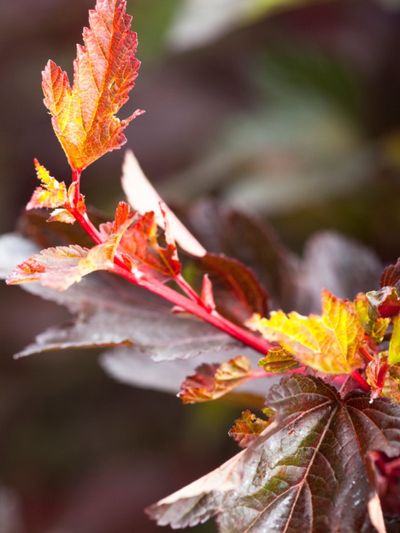Coppertina Ninebark Information
Ninebark shrubs (Physocarpus sp.) are native to North America. Their native range is the eastern half of North America, from Quebec down throughout Georgia, and from Minnesota to the East Coast. These native varieties mostly have green or yellow foliage and are hardy in zones 2-9. They will grow in full sun to part shade, are not particular about soil conditions, and grow approximately 5-10 feet (1.5-3 m.) tall and wide. Native ninebark shrubs provide food and shelter for native pollinators, birds, and other wildlife. Because of their easy growing habit and cold hardiness, plant breeders have developed many cultivars of ninebark with different colored foliage, texture, and size. One very popular cultivar of ninebark is Coppertina (Physocarpus opulifolius ‘Mindia’). Coppertina ninebark shrubs were bred from the parent plants ‘Dart’s Gold’ and ‘Diablo’ ninebark shrubs. The resulting Coppertina variety produces copper-colored foliage in spring that matures to a deep, maroon color on gracefully arching stems. It also bears the classic ninebark flower clusters, which bud out as a light pink and open to white. When the flowers fade, the plant produces bright red seed capsules, which themselves can be mistaken for flowers. Like all ninebark shrubs, Coppertina adds winter interest to the garden with its unusual, peeling bark. This bark accounts for the shrub’s common name “ninebark.”
How to Grow a Coppertina Ninebark Shrub
Coppertina ninebark shrubs are hardy in zones 3-8. These ninebark shrubs grow 8-10 feet (2.5-3 m.) tall and 5-6 feet (1.5-2 m.) wide. The shrubs grow best in full sun but can tolerate part shade. Coppertina blooms throughout mid-summer. They are not particular about soil quality or texture and can handle clay to sandy soil, in an alkaline to slightly acidic pH range. However, Coppertina ninebark shrubs do not to be watered regularly for the first season as they take root. They should be fertilized with an all-purpose, slow-release fertilizer in spring. Ninebark shrubs also need good air circulation, as they are prone to powdery mildew. They can be pruned after flowering to make them more open and airy. Every 5-10 years, ninebark shrubs will benefit from a hard rejuvenating pruning.
